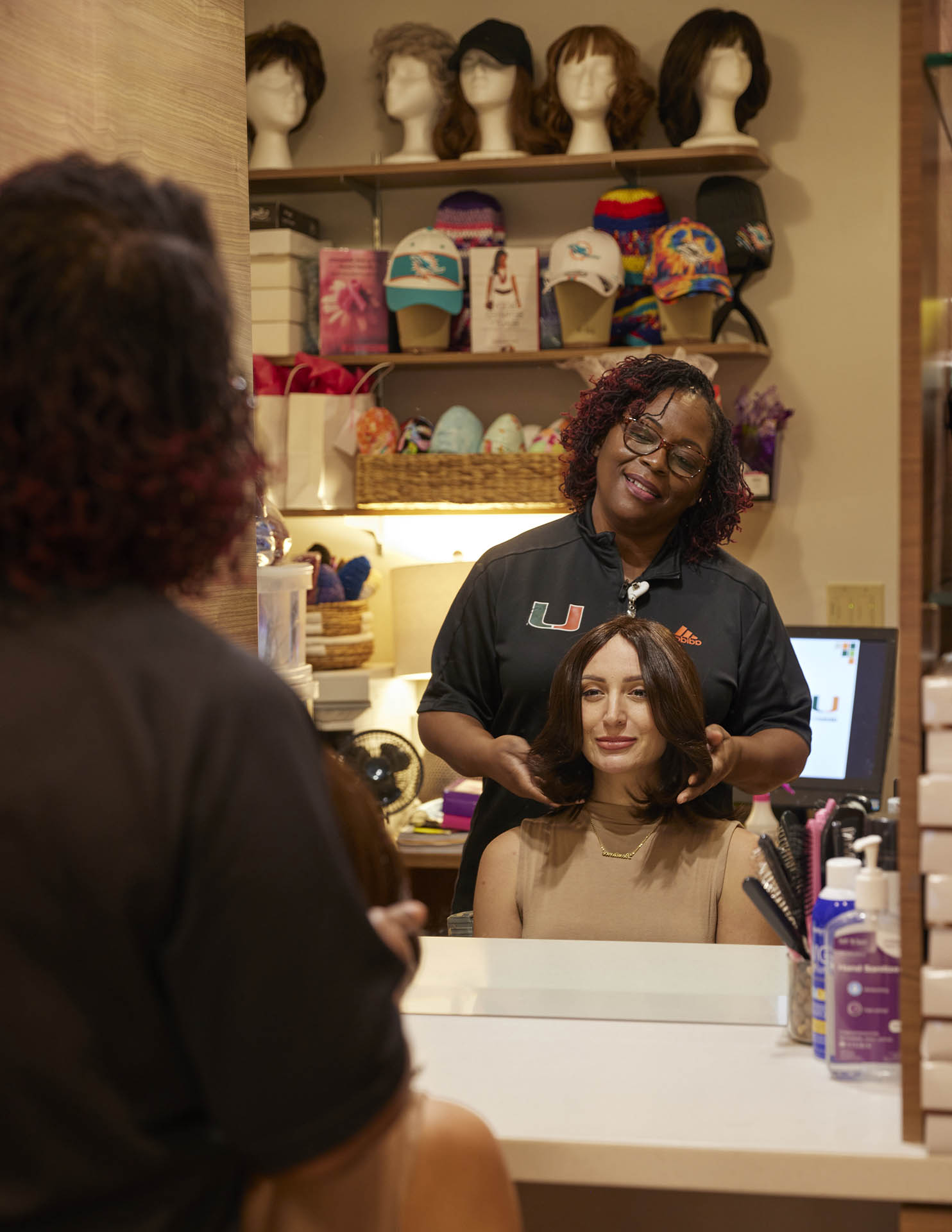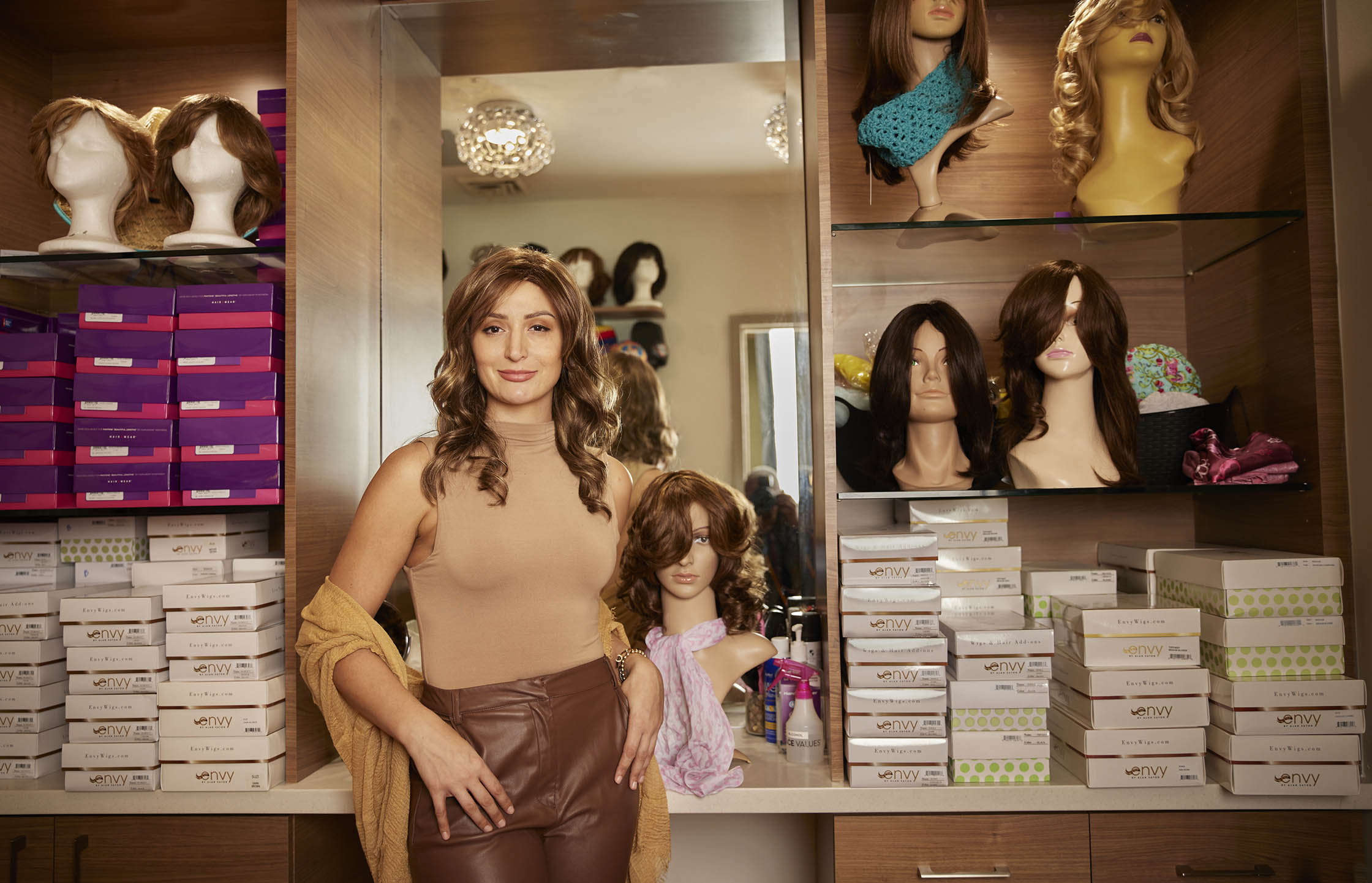Back on Top
The right wig is a win-win
By Ana Veciana-Suarez
Photography by Jeffery Salter

Concierge Coordinator Tangela Hillery adjusts a wig for Madeline Mordarski
M
ere days after turning 32, Madeline Mordarski found out she had triple-negative breast cancer, one of the most difficult tumors to treat. As the daughter of a breast cancer survivor, she knew she would lose her hair during chemotherapy, so she took matters into her own hands: She shaved her brown tresses off.
Mordarski picked out a synthetic wig through Sylvester’s Cancer Support Services wig program. It is now one of 10 in her collection, but it plays an important role. It’s “my working wig, my professional wig,” Mordarski said. She wears it to meetings, on external business calls, and for other job-related functions. She’s even given it a name: Teresa.
“Wearing a wig helps me blend in with the crowd,” she said. “I don’t have to explain why I don’t have any hair. And it makes me feel like I’m in control.”
Tangela Hillery, a concierge coordinator for Cancer Support Services, explained that hair loss can be traumatic for patients, particularly women. “It’s an outward expression of what’s going on inside,” she said.
Hillery helps patients pick out a complimentary wig and instructs them on how to wear it and care for it. The transformation is often instantaneous. “Their faces just light up when they first put on a wig,” she said. “They look like themselves again.”
That alone, she added, improves their self-image and boosts their confidence while lowering their feeling of anxiety — a win-win all around. ![]()



